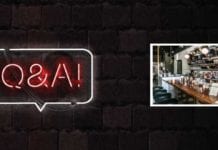How to build midday business
In 2011, the lunch daypart accounted for more than 1.7-billion visits and nearly $14 billion at commercial restaurants. After tough times in 2009 and 2010, lunch visits are once again growing as part of a trend predominantly benefiting quick-service restaurants(QSR) and retail market segments.
The Boring Brown Bag
“Brown-bagging” is on the rise, too. The NPD Group’s in-home data show 17 per cent of lunch meals are carried from home — a number that’s risen from 2010. Certainly, one business-building opportunity lies in tempting consumers away from the boring contents of those brown bags. Only 14 per cent of midday meals are sourced from a restaurant, so that leaves room for growth.
Per-capita restaurant lunches have reached 52-annual visits, a trend that has been rebuilding since the recession. Visit declines since 2008 were particularly evident among consumers between the age of 18 and 34 who were affected by the economic downturn. Interestingly, this age group consists of consumers who are among the heaviest users of restaurants for lunch.
Meanwhile, approximately six out of 10 restaurant afternoon meals are eaten on premise, which leaves room for operators to upsell beverages and other add-ons, in turn driving higher checks. Purchases taken back to the office (or other workplace) account for another 14 per cent of QSR lunches, a number that dropped during the recession.
Attracting Lunch Visits at Full-Service
Full-service restaurants (FSR) have a particular challenge during the lunch daypart as they’re forced to compete with countless quick-service eateries. QSR lunch customers are likely to say they chose a particular restaurant because of the price, a specific craving or time constraints. When it comes to an FSR lunch visit, the quality of food is a more important driver, with an average check of $12.45 at FSR, compared to $6.45 at QSR.
Winning Lunch Promotions
In NPD’s “FSR Report: What Customers Want,” consumers indicate certain promotional offers are more likely to entice them to select FSR over QSR for lunch. They are:
- a “two-can-dine-for-$15” group offer (53 per cent);
- a fixed-price menu, including appetizer,
- main course and beverage (48 per cent);
- a build-your-own-lunch combo, offering two items from a list (46 per cent);
- smaller lunch portions at a reduced price (44 per cent).
A Sign of the Times
Changing lifestyles and time constraints are often cited as the catalyst for the current shift in consumer behaviour in the restaurant industry. While consumers are “brownbagging” more at lunch than they have in the past, NPD data shows 13 per cent of these meals are skipped. Perhaps, some
Canadians are too busy for a midday meal and are cutting out what could be perceived as a discretionary purchase. Either way, understanding why consumers “brown bag” it, skip it and/or eat fewer restaurant meals at work, is integral to developing products and promotions that drive lunch traffic.
Keep Reading
Much Depends on Dinner: Fixing Ailing Evening Daypart
Scene Stealer: Profiling chef Michael Howell
A Study in Style: Restaurant Style Trends





















